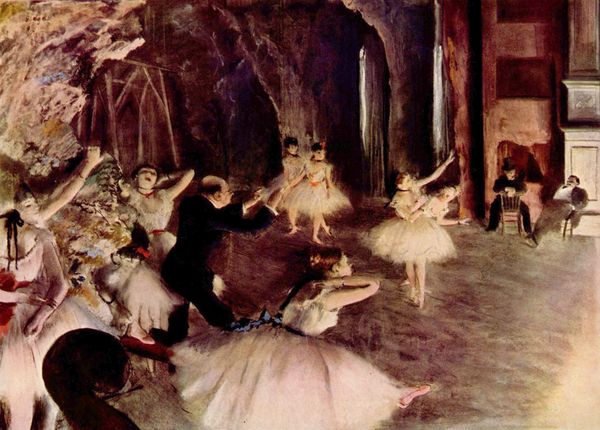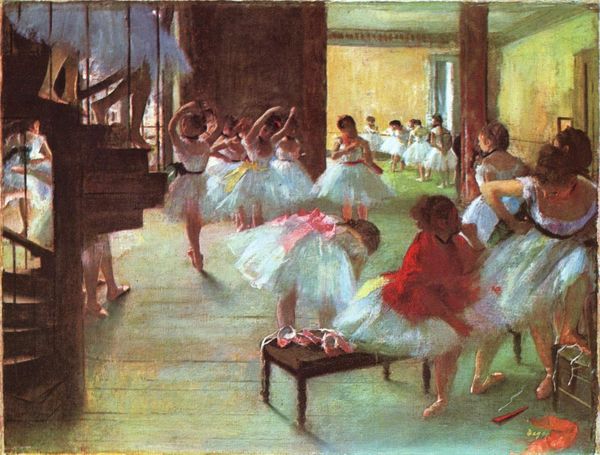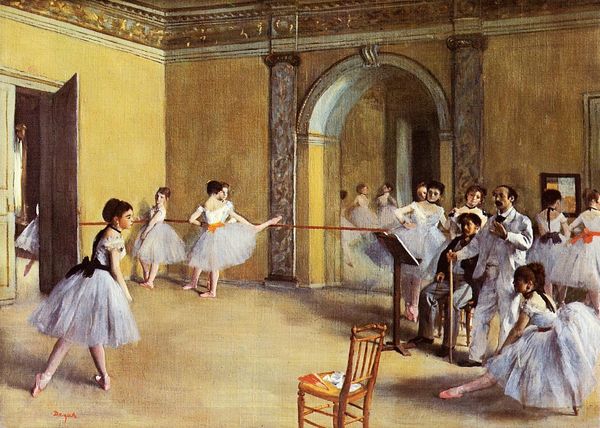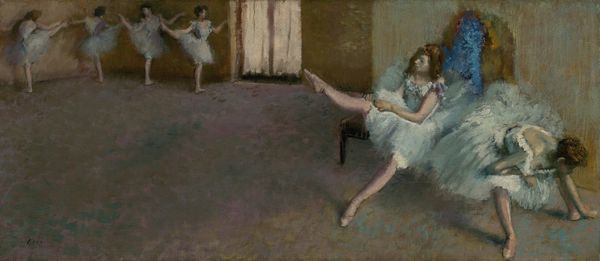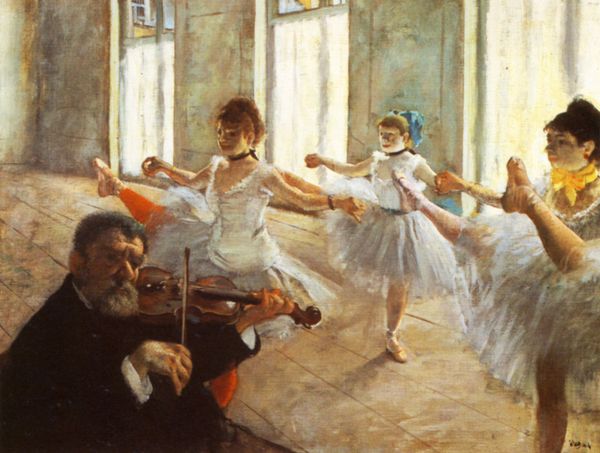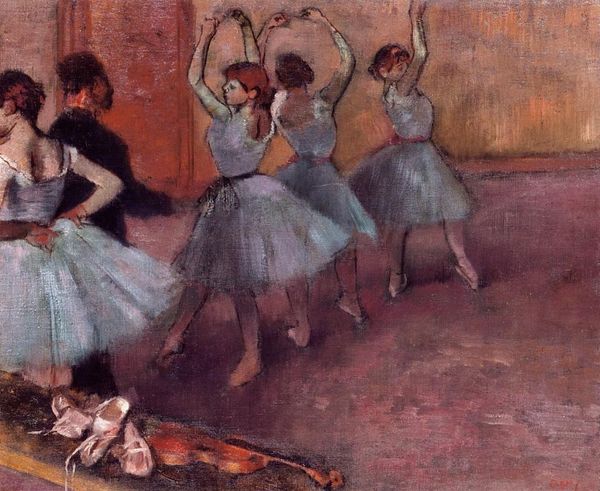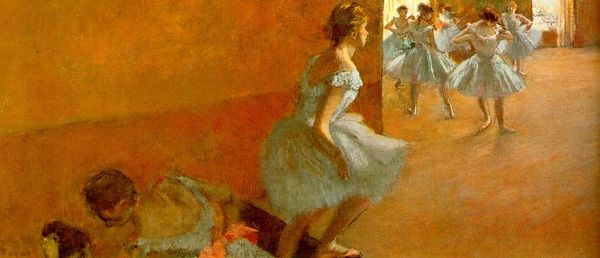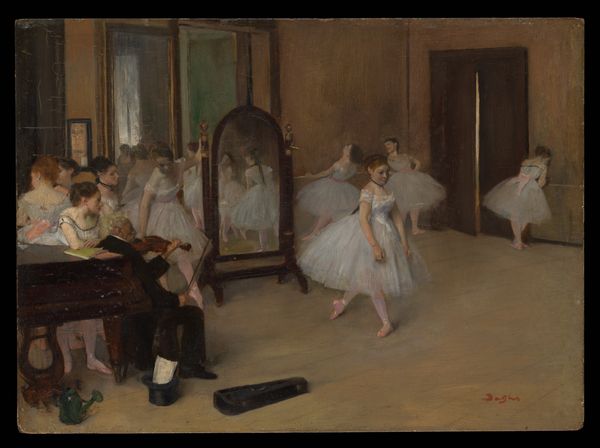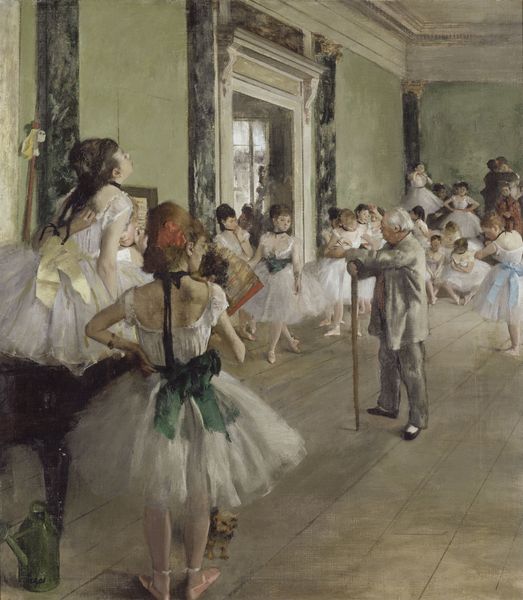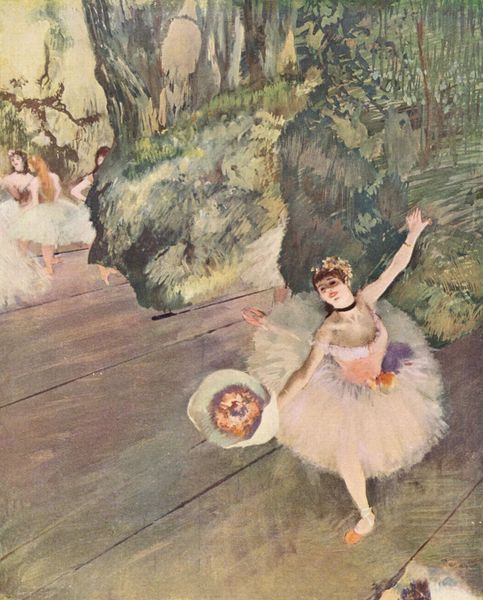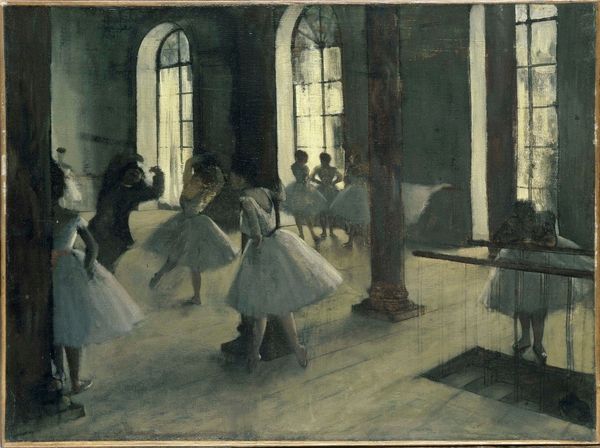
oil-paint
#
portrait
#
gouache
#
impressionism
#
oil-paint
#
figuration
#
oil painting
#
cityscape
#
genre-painting
Copyright: Public domain
Editor: This is "Dance Class," painted by Edgar Degas in 1871 using oil paint. The scene feels candid, like a snapshot of a real ballet practice. What do you see in this piece, looking at it through the lens of iconography? Curator: It's a fascinating portrayal of potential and aspiration, but look closer at the mirroring and spatial arrangements. Notice how the mirrors reflect the dancers, multiplying them and distorting their forms. Mirroring carries connotations of vanity, the fractured self, illusion versus reality – what could this mean in the context of the Parisian ballet? Editor: So, it's more than just a pretty scene of dancers in a studio? Curator: Absolutely. Consider the era. The ballet was becoming increasingly popular, attracting diverse social classes, but its inner workings remained veiled, shrouded by beauty and artifice. These dancers aren't merely artists; they're performing a specific cultural role. They are also literally being 'reflected' by the expectations of others, as their images suggest both internal identity and public image. What happens when those fracture, bend, multiply, compete with one another? Degas’ visual language suggests a society grappling with new expectations. Editor: That's a great point, and makes the composition much more meaningful. Thank you! Curator: Indeed! It is easy to become lost in beauty; art asks us to delve into cultural significance.
Comments
No comments
Be the first to comment and join the conversation on the ultimate creative platform.
